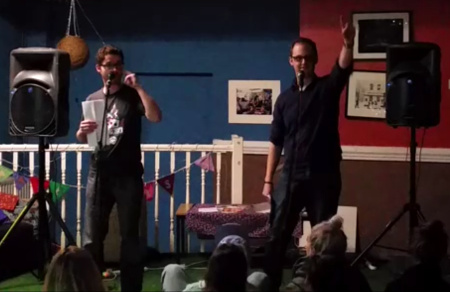Theatre Review: A Raisin in the Sun
Article published: Thursday, February 4th 2010
What would you do with a life-changing sum of money? This is the pivotal question of Lorraine Hansberrys’ 1959 play and becomes the lens through which life in fifties America for a black family is starkly highlighted. The Royal Exchanges’ intimate theatre becomes the claustrophobic apartment in which three generations of the Younger family feud, dream and seek shelter from a harsh, inhospitable world.
 The story opens with head of the family Lena Younger deciding how to spend the $10,000 life insurance premium received after the death of her husband. Her son Walter dreams of using the money as a step towards being a rich and successful businessman. His sister Beneatha, intoxicated with the ideas of Pan-Africanism, dreams of medical school.
The story opens with head of the family Lena Younger deciding how to spend the $10,000 life insurance premium received after the death of her husband. Her son Walter dreams of using the money as a step towards being a rich and successful businessman. His sister Beneatha, intoxicated with the ideas of Pan-Africanism, dreams of medical school.
As well as conflicts over money and the inter-generational tensions emerging through the changing status of black people in fifties America, the Youngers also encounter racism and misfortune outside of the house. A Raisin in the Sun asks difficult questions surrounding the American Dream; its truthfulness and accessibility, particularly for the Afro-American community. They are as resonant now as ever.
The local cast includes Coronation Street actor Ray Fearon as Walter Younger and 14 year-old Damani Holness of Loreto High School playing Travis, Walters’ youngest son. The rousing standing ovation at the end of the play only emphasised the quality of the acting and complemented the lasting power of a script half-a-century old.
The play has twice been made into a film, one including Sean “P Diddy” Combs, and the original, 1961 film version was selected for preservation by the United States of America National Film Library. In 2000 A Raisin in the Sun was chosen by playwrights, critics, actors and directors as one of the top 100 plays of the twentieth century.
The title is taken from a poem by Langston Hughes called Harlem. “What happens to a dream deferred? / Does it dry up / Like a raisin in the sun? . . . Or does it explode?”
Indeed, the painful, drawn out explosion of Walter’s stifled dreams of financial success, fuelled by masculine pride, is a key facet of the play’s momentum. Yet it is the conflicts between dreams and how they are resolved, against a background of poverty and racial prejudice, which provides this performance with all its emotional power.
Ben Lear
Raisin in the Sun is at the Royal Exchange until the 20th of February.
Comments
No comments found
The comments are closed.



